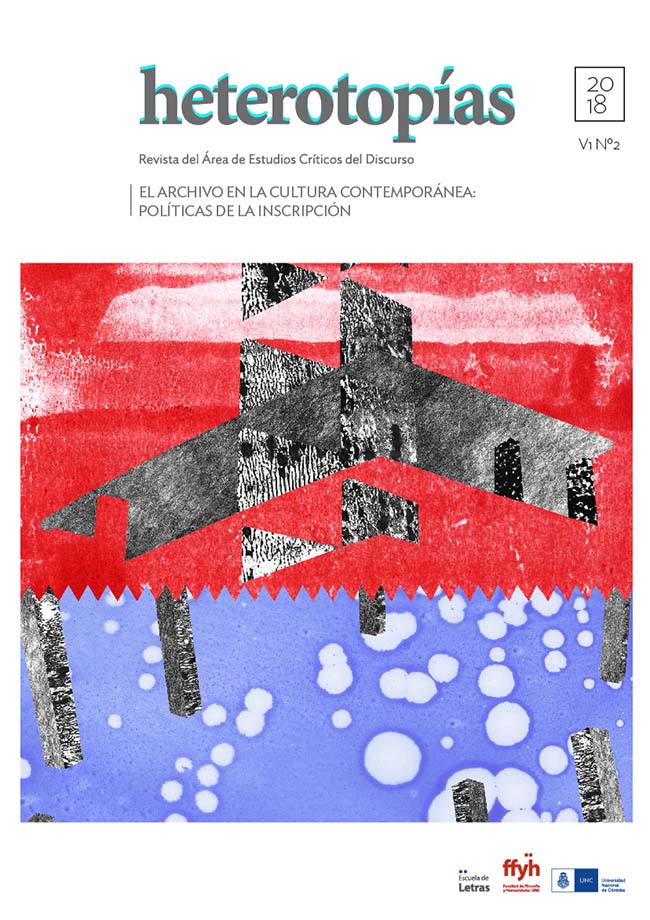A file to include the images in the story
Main Article Content
Abstract
The audiovisual records that are part of the Audiovisual Archives of Crimes Against Humanity are the visible document of the legal cases processed by the federal courts acting upon Santa Fe's territory. The vision shared in these images becomes a political and cultural movement that is officially established with the opening of these archives to the community. An inauguration that, from the moment of its creation, lays out new questions regarding the political and theoretical tensions that are generated between the recording of the testimony originally stated in the judicial headquarters and their inclusion in the archives material. Even though that their material conservation, the accessibility it offers regarding queries and actions focused on its transmission constitute different functions, but nonetheless complementary in their goal, the almost simultaneity in the recording of the trails and its transformation in a memory device would seem to expose a misalignment regarding the conventional timing an archive creation requires. In that temporal misalignment, caused by a present that is characterized for recording and archiving facts simultaneously, those images are here to propose us a new way of relating to history. We will not only be looking at a past preserved in the archives, distant in time from our present, but we will have created a device that will favor the emergence of a new relationship between historic moments.
Downloads
Article Details
Those authors who have publications with this journal, accept the following terms: Those authors who have publications with this journal, accept the following terms:
a. The authors will keep their copyright and guarantee to the journal the right of first publication of their work, which will be simultaneously subject to the Creative Commons Attribution - Non-Commercial - Share Alike (by-nc-sa) Attribution License; no commercial use of the original work or any derivative works is allowed, the distribution of which must be done with a license equal to the one that regulates the original work.
b. Authors may adopt other non-exclusive license agreements for the distribution of the published version of the work (e.g., deposit it in an institutional telematic archive or publish it in a monographic volume) provided that the initial publication in this journal is indicated.
c. Authors are allowed and recommended to disseminate their work through the Internet (e.g. in institutional telematic archives or on their website) before and during the submission process, which may lead to interesting exchanges and increase the number of citations of the published work. (See The effect of open access).
How to Cite
References
DIDI - HUBERMAN, Georges, (2013) Cuando las imágenes toman posición, España, Antonio Machado Libros.
CARNOVALE, Vera, LORENZ Federico y PITTALUGA Roberto (comps), (2006), Historia, memoria y fuentes orales, Buenos Aires, Cedinci Editores.
JELIN, Elizabeth, (2006) “La narrativa personal de lo “invivible” en Historia, Memoria y Fuentes orales, Buenos Aires, Cedinci Editores.
HILB, Claudia, (2013) Usos del pasado. Qué hacemos hoy con los setenta, Buenos Aires, Siglo Veintiuno Editores.
TRAVERSO, Enzo, (2011) El pasado. Instrucciones de uso, Buenos Aires, Prometeo.
POLLAK, Michel, (2006) Memoria, olvido, silencio. La producción social de identidades frente a situaciones límite. Buenos Aires. Ediciones al Margen.
VINYES, Ricard, (2009) Sobre víctimas y vacíos; ideologías y reconciliaciones; privatizaciones e impunidades. Enrique Ruano. Memoria viva del franquismo. Ana Dominguez Rama. (Ed).
